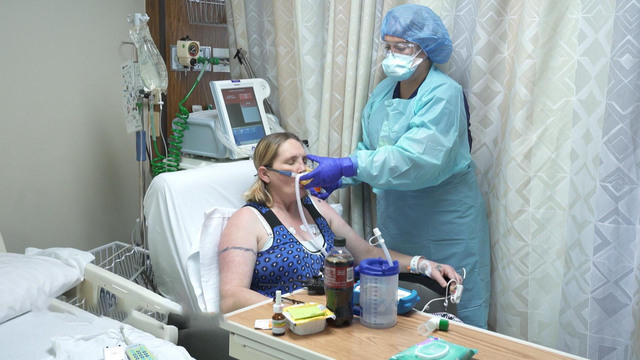The average pace of deaths from COVID-19 among rural Americans is now nearly double that of people in urban communities, a grim reminder of a disproportionate toll inflicted by the latest wave of the virus.
The two-week daily average of deaths from COVID-19 has climbed to nearly 1 in every 100,000 Americans living outside of metropolitan counties, according to the latest figures from the Centers for Disease Control and Prevention. In urban counties, the average is 0.55 per 100,000 residents, below the national average.
New cases of the virus also remain far higher in rural counties compared to urban counties, though spread of the virus has begun to slow nationwide following a months-long surge fueled by the highly contagious Delta variant.
Health officials warn that significant gaps remain in vaccination rates in different parts of the country, with low vaccination areas seeing worse rates of cases, hospitalizations and deaths.
A recent survey from the Kaiser Family Foundation reported 20% of rural residents said they would “definitely not” get a COVID-19 vaccine, compared to just 7% of urban and 14% of suburban residents.
“While we have made tremendous progress in our campaign to vaccinate as many Americans as possible, we still have work to do to make sure that vaccination coverage is high and even across the country,” CDC Director Rochelle Walensky told reporters at a White House briefing on Friday.
Though many counties in both rural and urban parts of the country remain largely unvaccinated, a recent Rural Policy Research Institute analysis found that non-metropolitan areas are averaging higher case rates and lower vaccination rates in every region of the country. Even when compared to urban counties with low vaccination rates, rural counties averaged worse rates of COVID-19 compared to their urban counterparts.
“For those of us that work in public rural health care, that’s not entirely surprising. Because, there’s this phrase we used to describe rural populations, and that is they are older, sicker and poorer,” says the University of Iowa’s Fred Ullrich, who co-authored the report.
Counties in less urban areas that met public health criteria for high “social vulnerability” were already more likely to be hotspots of COVID-19, the CDC reported last year, even before vaccines became widely available. And health experts have long warned that many rural Americans were at higher risk of hospitalization for COVID-19 due to underlying health conditions which are linked to severe cases of the disease. It’s a combination that could overwhelm rural hospitals.
“They don’t have as much hospital capacity to take care of their patients. And that’s very important for them. They’re more at risk of dying, if COVID-19 hits them, because simply it will take them a long time to get to a good hospital to treat COVID-19,” Dr. Ali Mokdad, chief strategy officer of population health for the University of Washington, told CBSN.
Hospitals welcomed money that poured in to help shore up rural health systems earlier this year from the Biden administration, though many remain at risk of closure.
“If I am a small hospital, my margins in every single direction are smaller. I don’t have a lot of spare staff that I can call on, when everyone is getting burned out, they’re getting tired, they’re getting harder to find,” says Ullrich.
Ullrich said rural hospitals also faced a myriad of other challenges scaling up to face COVID-19 surges, ranging from fewer spare beds to difficulties transferring patients to larger hospitals.
Hospitals serving rural communities from Idaho to Alaska have activated “crisis standards of care” to ration their resources in recent weeks as they faced surging hospitalizations.
“The deck is kind of stacked against non-metropolitan America,” says Ullrich.


































